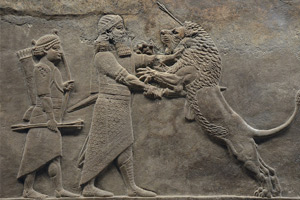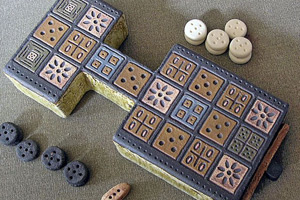
Trees in Sumeria
It is easy to think of Sumeria as a barren land, only kept alive by irrigation canals. In addition to irrigated trees such as date palms, we also find interesting flora such as the tamarisk, juniper and cedar.

The Uruk period was the time between about 4000-3100 BCE in Mesopotamia. It covers the growth of the city of Uruk and cities around it. During the Uruk period, the irrigation systems were developed to massively increase food production (particularly barley) and sheep pasturing for wool to make cloth. This food surplus grew Uruk to 25-50,000 people and led to the birth of the first civilisation. The Uruk period was followed by the Jemdet Nasr period
The city of Uruk was likely 3-5 km2 in size, with a population density of about 10,000 people per km2 (twice as dense as Dublin). It consisted of two mounds with temples to Inanna and Anu.
It is important to mention the difficulty of measuring town sizes and timelines exactly 6000 years in the past. It might be that the Uruk period started earlier, for example. We are guessing the population based on size of the city. All these dates and numbers should be taken as a rough indication, rather than absolute numbers.
You may also be interested in these articles

It is easy to think of Sumeria as a barren land, only kept alive by irrigation canals. In addition to irrigated trees such as date palms, we also find interesting flora such as the tamarisk, juniper and cedar.

If you have visited the Sumerian section of the British Museum, chances are you have seen the Lion Hunt of Ashurbanipal. It is a series of very impressive wall coverings illustrating the King Ashurbanipal's prowess.

Possibly the oldest board game in existence, and surely the oldest we have rules for, the Game of Ur is a fascinating predecessor to Backgammon. Watch a video on how to play it, and see the original at British Museum.